My.Family - Ancestors, Descendants and Others
Person Page 2,005
Elizabeth Ann Walter 1
1
- Sargent Lineage: Caroline Packer Sargent8, William7, Leonard6, Isaac5, John4, Isaac3, John2, John1, William0
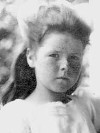
1900-1972
Parents
- Father: William Emley Walter (b. 3 December 1870, d. 30 September 1945)
- Mother: Caroline Packer Sargent (b. 1 December 1873, d. 19 December 1956)
Biography
- Elizabeth Ann Walter was born on 11 September 1900 in Moylan, Pennsylvania.1
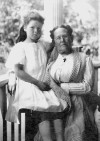 Adele Packer Sargent
Adele Packer Sargent
and her granddaughter
Elizabeth Ann Walter- She completed 4 years of college.2
- Elizabeth married Paul Joseph Furnas on 15 March 1923 in Swarthmore, Pennsylvania.1
- Paul Joseph Furnas and Elizabeth appeared on the 1940 US Federal Census of Fornum Rd, Upper Provience, Delaware County, Pennsylvania, enumerated on 17 June 1940. They own their home with a reported asset of $40,000. It is a farm. Also listed with the household were Roy Wearicks age 35 servant, & Dorothy Wallace age 40 servant.2
- She died on 10 December 1972 in Richmond, Indiana, at age 72.1,3
- She was buried in Providence Friends Meeting Cemetery, Media, Pennsylvania.3
 Gravestone
Gravestone
Family: Paul Joseph Furnas (b. 5 September 1889, d. 21 September 1960)
- William Paul Furnas (b. 22 October 1924, d. 30 January 1925)
- Deborah Sargent Furnas (b. 23 March 1926, d. 22 March 2000)
- Paul Joseph Furnas (b. 19 August 1929, d. 18 August 2010)
- Caroline Furnas+
- Betty Anne Furnas
- Phillip Barret Furnas
Other Information
- Relationship: 7th cousin 2 times removed of Linda Sargent
- Charts/Lists: Descendants of William Sargent, Immigrant
- Last Edited: 19 September 2024 16:46:29
Citations
Paul Joseph Furnas1
Biography
- Paul Joseph Furnas was born on 5 September 1889 in Camby, Indiana.1
- He completed 4 years of college.2
- Paul married Elizabeth Ann Walter, daughter of William Emley Walter and Caroline Packer Sargent, on 15 March 1923 in Swarthmore, Pennsylvania.1
- In 1940 Paul Joseph Furnas was the treasurer of a floor over firm.2
- He and Elizabeth appeared on the 1940 US Federal Census of Fornum Rd, Upper Provience, Delaware County, Pennsylvania, enumerated on 17 June 1940. They own their home with a reported asset of $40,000. It is a farm. Also listed with the household were Roy Wearicks age 35 servant, & Dorothy Wallace age 40 servant.2
- He died on 21 September 1960 in Lower Merion, Pennsylvania, at age 71.1
- He was buried in Providence Friends Meeting Cemetery, Media, Pennsylvania.3
Family: Elizabeth Ann Walter (b. 11 September 1900, d. 10 December 1972)
- William Paul Furnas (b. 22 October 1924, d. 30 January 1925)
- Deborah Sargent Furnas (b. 23 March 1926, d. 22 March 2000)
- Paul Joseph Furnas (b. 19 August 1929, d. 18 August 2010)
- Caroline Furnas+
- Betty Anne Furnas
- Phillip Barret Furnas
Other Information
- Last Edited: 19 September 2024 16:46:29
Citations
William Paul Furnas 1
1
- Sargent Lineage: Elizabeth Ann Walter9, Caroline Packer Sargent8, William7, Leonard6, Isaac5, John4, Isaac3, John2, John1, William0
Parents
- Father: Paul Joseph Furnas (b. 5 September 1889, d. 21 September 1960)
- Mother: Elizabeth Ann Walter (b. 11 September 1900, d. 10 December 1972)
Biography
- William Paul Furnas was born on 22 October 1924 in Woodbury, New Jersey.1
- He died on 30 January 1925 in Woodbury, New Jersey, at age 3 months and 8 days.1
Other Information
- Relationship: 8th cousin 1 time removed of Linda Sargent
- Charts/Lists: Descendants of William Sargent, Immigrant
- Last Edited: 19 September 2024 16:48:05
Citations
Deborah Sargent Furnas 1
1
- Sargent Lineage: Elizabeth Ann Walter9, Caroline Packer Sargent8, William7, Leonard6, Isaac5, John4, Isaac3, John2, John1, William0
Parents
- Father: Paul Joseph Furnas (b. 5 September 1889, d. 21 September 1960)
- Mother: Elizabeth Ann Walter (b. 11 September 1900, d. 10 December 1972)
Biography
- Deborah Sargent Furnas was born on 23 March 1926 in Woodbury, New Jersey.1
- She appeared on the 1940 US Federal Census of Fornum Rd, Upper Provience, Delaware County, Pennsylvania, enumerated on 17 June 1940, in the household of her parents Paul Joseph Furnas and Elizabeth.2
- Deborah married Robert Huntington Savage on 4 October 1952 in Media, Pennsylvania.1
- She died on 22 March 2000 in New York City, New York, at age 73.1
- She was buried in Gwynedd Friends Cemetery, Gwynedd, Pennsylvania.3
 Gravestone
Gravestone
Family: Robert Huntington Savage (b. 11 August 1914, d. 18 July 1969)
Other Information
- Relationship: 8th cousin 1 time removed of Linda Sargent
- Charts/Lists: Descendants of William Sargent, Immigrant
- Last Edited: 19 September 2024 16:46:29
Citations
Robert Huntington Savage1
Biography
- Robert Huntington Savage was born on 11 August 1914 in New Jersey.1
- Robert married Deborah Sargent Furnas, daughter of Paul Joseph Furnas and Elizabeth Ann Walter, on 4 October 1952 in Media, Pennsylvania.1
- Robert Huntington Savage died on 18 July 1969 at age 54.1
- He was buried in Gwynedd Friends Cemetery, Gwynedd, Pennsylvania.2
Family: Deborah Sargent Furnas (b. 23 March 1926, d. 22 March 2000)
Other Information
- Last Edited: 19 September 2024 16:46:29
Citations
Paul Joseph Furnas 1
1
- Sargent Lineage: Elizabeth Ann Walter9, Caroline Packer Sargent8, William7, Leonard6, Isaac5, John4, Isaac3, John2, John1, William0
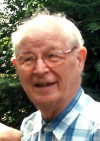
1929-2010
Parents
- Father: Paul Joseph Furnas (b. 5 September 1889, d. 21 September 1960)
- Mother: Elizabeth Ann Walter (b. 11 September 1900, d. 10 December 1972)
Biography
- Paul Joseph Furnas was born on 19 August 1929 in Woodbury, New Jersey.1
- He appeared on the 1940 US Federal Census of Fornum Rd, Upper Provience, Delaware County, Pennsylvania, enumerated on 17 June 1940, in the household of his parents Paul Joseph Furnas and Elizabeth.2
- Paul married Cynthia Ann Patti on 8 June 1952 in Richmond, Indiana.1
- He died on 18 August 2010 in Saint Louis Park, Minnesota, at age 80.1
Family: Cynthia Ann Patti (b. 18 November 1929, d. 14 May 2011)
Other Information
- Relationship: 8th cousin 1 time removed of Linda Sargent
- Charts/Lists: Descendants of William Sargent, Immigrant
- Last Edited: 19 September 2024 16:46:29
Citations
Cynthia Ann Patti1
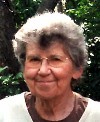
1929-2011
Biography
- Cynthia Ann Patti was born on 18 November 1929 in Richmond, Indiana.1
- Cynthia married Paul Joseph Furnas, son of Paul Joseph Furnas and Elizabeth Ann Walter, on 8 June 1952 in Richmond, Indiana.1
- Cynthia Ann Patti died on 14 May 2011 in Hennepin, Minnesota, at age 81.1
Family: Paul Joseph Furnas (b. 19 August 1929, d. 18 August 2010)
Other Information
- Last Edited: 19 September 2024 16:46:29
Citations
Caroline Furnas 1
1
- Sargent Lineage: Elizabeth Ann Walter9, Caroline Packer Sargent8, William7, Leonard6, Isaac5, John4, Isaac3, John2, John1, William0
Parents
- Father: Paul Joseph Furnas (b. 5 September 1889, d. 21 September 1960)
- Mother: Elizabeth Ann Walter (b. 11 September 1900, d. 10 December 1972)
Family: Arnold Elton Trueblood (b. 2 January 1930, d. 8 February 2020)
Other Information
- Relationship: 8th cousin 1 time removed of Linda Sargent
- Charts/Lists: Descendants of William Sargent, Immigrant
- Last Edited: 19 September 2024 16:46:29
Citations
Arnold Elton Trueblood1
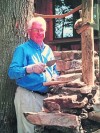
1930-2020
Biography
- Arnold Elton Trueblood was born on 2 January 1930 in Greensboro, North Carolina.1,2
- Father: D Elton Trueblood - Mother: Pauline Goodenow.2
- He attended school at Earlham College, Richmond, Indiana.2
- The wedding was held at the bride's home. It was performed after the manner of Friends, under the care of Clear Creek Meeting.1
- Arnold founded the Trueblood Company, a residential construction and land development company in Spring House PA.1
- He died on 8 February 2020 in Gwynedd, Pennsylvania, at age 90.2
Family: Caroline Furnas
Obituary Notice
A visionary businessman with a passion for building community, Arnold Elton Trueblood died February 8 at Foulkeways at Gwynedd at the age of 90 after several years of declining health. Founder of a high-end residential construction company and a land development business, he earned recognition for his work in both areas. Locally he introduced the concept of cluster zoning, which preserves open land even as new homes are constructed. His Woodbridge Meadow community in Penllyn remains a vibrant village with ample greenspace and community trails. Woodbridge Meadow won the Outstanding Land Development Award from the Montgomery County Planning Commission. Over the years, he was honored for his work as both a builder and a developer. His firm received a Best Contemporary Prototype award from the American Institute of Architecture (AIA) in 1973 for a house he built in partnership with architect Lynn C. Taylor on Woodspring Lane in Gwynedd Valley in 1973, and later a Best Small House Award from the AIA (published by House Beautiful magazine) for a residence in Blue Bell. Another project in partnership with Lynn Taylor that won a Montgomery County Planning Commission award was the Spring House Village Center, a shopping center that repurposed a former cow barn and ice cream manufacturing operation, and which was honored as the best small themed shopping center in the United States. A committed supporter of contemporary architecture, he nevertheless took on the challenge of many historic renovations including restoring a house on Philadelphia’s Elfreth’s Alley, the nation’s oldest continuously inhabited street, a national landmark. Trueblood also gave generously of his time to public service, in many cases with a Quaker theme. He served for many years on the Board of Directors at Jeanes Hospital, an institution founded in 1928 through the will of noted Quaker Philanthropist Anna T. Jeanes. The hospital eventually became part of Temple Health. When a gift of land was made to Gwynedd Friends Meeting, where he and his family belonged, he served on the Founding Committee that created Foulkeways at Gwynedd, one of the first continuing care retirement communities in the country. He served for many years on the Foulkeways Board, and in 2006, he and his wife, Caroline, moved there as residents. He was a dedicated supporter in many ways of Gwynedd Meeting, serving on numerous committees including many years as Property Clerk. His professional and private commitments came together in a role as chairman of the Lower Gwynedd Township Recreation Committee. A firm believer in promoting the useful appreciation of the outdoors he initiated the Lower Gwynedd Trail System, to which he contributed many easements on building subdivisions his company created. He loved water features and built many of the ponds dotting Lower Gwynedd. Arnold was born in Greensboro, North Carolina, the son of D. Elton and Pauline Goodenow Trueblood. His father was beginning a notable career there as an educator and writer by serving as Dean of Men at Guilford College, a Quaker institution. His family traveled as his academic career progressed, and Arnold ultimately grew up at Stanford University in Palo Alto, California, where his father served as chaplain as well as chairman of the philosophy department. As a boy, Arnold traveled east by train to attend Quaker schools, starting at Westtown School in West Chester, Pennsylvania, in grade eight. Later, Arnold attended Earlham College in Richmond, Indiana, another Quaker school with important family roots. He married his childhood sweetheart, Caroline Sargent Furnas, also the product of a Quaker family, in her family home in Richmond in 1951. The new couple made a decision to settle in the East, living in Montgomery County. Ultimately, they built a house on high ground along the Trewellyn Creek that had a unique Quaker history of its own. It was part of the original grant by Native Americans to William Penn who re-granted it in turn to the Evans family, original settlers in the area. As a result, the Trueblood family was the first ever to pay for the property, purchasing it from the late Horace Evans in 1959. Arnold designed and built a house that expressed his love of contemporary architecture as well as his sense of history. When he learned that Philadelphia was replacing sidewalks in the oldest part of the city, he collected the discarded 17th century material originally used as ship ballast. He repurposed the old brick into floors, a terrace and retaining walls. He had an instinctive sense of how to orient a building to create compelling space. To convince his highly skeptical wife that this raw, wooded land would make an ideal home, he had a tree cut down, leaving a five-foot stump indicating where the living room floor would be and had her climb a ladder to see the view from its future windows. That land was divided into four lots and each became a home to one of a group of close friends, all members of Gwynedd Meeting. A fifth house, also built by the Trueblood Company, later extended the neighborhood across the Trewellyn. He always conceived of housing as community first, later including walking trails in developments to give residents useful outdoor space. He built with humor as well as utility—he sculpted racing cars from sand for his children during summer vacations in Avalon in New Jersey. He was highly organized and intensely physical, a talented skier who taught his children to sail in a bathtub-sized turnabout at Lake Paupac in the Poconos, another Quaker community created by a collection of friends after World War II. There he built with his own hands a family summer house on high land selected by his mother, with a small cabin that served as a library for his father, who was a best-selling author as well as a professor. At his family’s home in Gwynedd Valley, Arnold created what is believed to be the first regulation bowling green in the area, as well as the first zip line in the region running from a terrace behind the house to a lawn across the Trewellyn. Joined to his appreciation for mid-century modern design was a deep respect for craftsmanship. He made it a signature of his construction work, and he himself became an accomplished stone mason and brick-layer, a pastime he contributed with pleasure to the homes of his friends and family members, building chimneys, laying pathways and terraces. He served in many roles to preserve and protect the historic Gwynedd Friends meeting house he and his family belonged to since coming to the area in the 1950s and was instrumental in a successful effort to preserve the 18th century Beaumont House, an old stone farmhouse close to Route 202. Eventually the structure was moved (as the highway expanded) and still serves as a guesthouse for the Foulkeways community. He is survived by five children; Ann Trueblood Raper (David) of Summerfield, North Carolina; David Trueblood (Michael Flier) of Cambridge, Massachusetts; Eric Trueblood (Linda) of Lincoln, Virginia; Neil Trueblood of Lafayette Hill, Pennsylvania; and Jonathan Trueblood (Katrina) of Bedminster, Pennsylvania. He and Caroline had ten grandchildren and five great-grandchildren. Arnold is also survived by two brothers, D. Martin Trueblood of Foulkeways at Gwynedd and Samuel J. Trueblood of Exton, Pennsylvania; and a sister, Elizabeth Trueblood Derr of Oxford, Pennsylvania. A memorial service will be held at Gwynedd Meeting to celebrate his life on Saturday, March 7, at 3:30 p.m. Contributions may be made in Arnold Trueblood’s memory to Gwynedd Friends Meeting, 1101 Dekalb Pike, Gwynedd PA 19454.3 An obituary was published in Friends Journal on 1 October 2020
Arnold Elton Trueblood
October 1, 2020
By Staff
Trueblood—Arnold Elton Trueblood, 90, on February 8, 2020, at Foulkeways in Gwynedd, Pa. The second son of D. Elton and Pauline Goodenow Trueblood, Arnold was born on January 2, 1930, in Greensboro, N.C., where his father was dean of men at Guilford College. His family moved frequently, living on the campus of Haverford College in Pennsylvania, next to Rufus Jones; and then at Stanford University in California, where his father served as chaplain and chairman of the Philosophy Department. At age ten, Arnold built a cabin, along with his older brother, Martin, in the backyard—his first house in a long career as a visionary builder and community developer.
As a boy, Arnold traveled east from California by train to attend Olney Friends School in Barnesville, Ohio, and Westtown School near West Chester, Pa. Later, after an almost fatal illness, Arnold attended Earlham College in Richmond, Ind. He married his childhood sweetheart, Caroline Sargent Furnas, in her family home in Richmond in 1951. The new couple made a decision to settle in the east, near Gwynedd (Pa.) Meeting. Ultimately, they built a house along the Trewellyn Creek on high ground that had a unique Quaker history. It was part of the original grant by Native Americans to William Penn, who re-granted it in turn to the Evans family, original settlers in the area. As a result, the Trueblood family was the first ever to pay for the property, purchasing it from the late Horace Evans in 1959.
Founder of a residential construction company and land development business, Arnold earned recognition for his work in both areas. His firm received a Best Contemporary Prototype Award from the American Institute of Architects (AIA) in 1973, and a Best Small House Award from AIA. Another award-winning project was the Spring House Village Shopping Center, which repurposed a former cow barn and ice cream manufacturing operation, honored as the best small, themed shopping center in the United States.
Arnold gave generously of his time to public service. He served for many years on the Board of Jeanes Hospital in Philadelphia. When a gift of land was made to Gwynedd Meeting, he and Caroline served on the Founding Committee that created Foulkeways in 1967, one of the first Quaker continuing care retirement communities in the country. He served many years on the Foulkeways Board. He was a dedicated member of Gwynedd Meeting, serving on numerous committees, including as clerk of the Property Committee. His professional and private commitments came together when he served as chairman of the Lower Gwynedd Township Recreation Committee. A firm believer in promoting the useful appreciation of the outdoors, he initiated the Lower Gwynedd trail system.
At Lake Paupac, a Quaker retreat in the Pocono Mountains created in 1948, he built a family summer house and a small cabin that served as a library for his father. Arnold loved spending time there with family and friends. He and Caroline worked as resident managers of the Paupac Lodge in the early ’50s. An accomplished stone mason and bricklayer, he built fireplaces, chimneys, walkways, terraces, and walls, a pastime he contributed with pleasure to the homes of his friends and family members at Paupac and many other places.
Arnold is survived by his wife of 69 years, Caroline Trueblood; five children, Ann Trueblood Raper (David), David Trueblood (Michael Flier), Eric Trueblood (Linda), Neil Trueblood, and Jonathan Trueblood (Katrina); ten grandchildren; five great-grandchildren; a brother, Samuel J. Trueblood (Mary Ellen); a sister, Elizabeth Trueblood Derr (Dan); and a sister-in-law, Margaret Trueblood. His brother D. Martin Trueblood died in April 2020 (see next milestone).2
Other Information
- Last Edited: 19 September 2024 16:46:29
Citations
Ann Trueblood 1
1
- Sargent Lineage: Caroline Furnas10, Elizabeth Ann Walter9, Caroline Packer Sargent8, William7, Leonard6, Isaac5, John4, Isaac3, John2, John1, William0
Parents
- Father: Arnold Elton Trueblood (b. 2 January 1930, d. 8 February 2020)
- Mother: Caroline Furnas
Family: David Raper
Other Information
- Relationship: 9th cousin of Linda Sargent
- Charts/Lists: Descendants of William Sargent, Immigrant
- Last Edited: 19 September 2024 16:46:29
Citations
David Raper1
Family: Ann Trueblood
Other Information
- Last Edited: 16 February 2025 20:51:23
Citations
David Elton Trueblood 1,2
1,2
- Sargent Lineage: Caroline Furnas10, Elizabeth Ann Walter9, Caroline Packer Sargent8, William7, Leonard6, Isaac5, John4, Isaac3, John2, John1, William0
Parents
- Father: Arnold Elton Trueblood (b. 2 January 1930, d. 8 February 2020)
- Mother: Caroline Furnas
Family: Michael Stephen Flier
Other Information
- Relationship: 9th cousin of Linda Sargent
- Charts/Lists: Descendants of William Sargent, Immigrant
- Last Edited: 19 September 2024 16:46:29
Citations
Michael Stephen Flier1,2
Family: David Elton Trueblood
Other Information
- Last Edited: 19 September 2024 16:46:29
Citations
Eric Trueblood 1
1
- Sargent Lineage: Caroline Furnas10, Elizabeth Ann Walter9, Caroline Packer Sargent8, William7, Leonard6, Isaac5, John4, Isaac3, John2, John1, William0
Parents
- Father: Arnold Elton Trueblood (b. 2 January 1930, d. 8 February 2020)
- Mother: Caroline Furnas
Family: Linda (née unknown) Trueblood
Other Information
- Relationship: 9th cousin of Linda Sargent
- Charts/Lists: Descendants of William Sargent, Immigrant
- Last Edited: 16 February 2025 20:51:23
Citations
Linda (née unknown) Trueblood1
Family: Eric Trueblood
Other Information
- Last Edited: 19 September 2024 16:46:29
Citations
Neil Trueblood 1
1
- Sargent Lineage: Caroline Furnas10, Elizabeth Ann Walter9, Caroline Packer Sargent8, William7, Leonard6, Isaac5, John4, Isaac3, John2, John1, William0
Parents
- Father: Arnold Elton Trueblood (b. 2 January 1930, d. 8 February 2020)
- Mother: Caroline Furnas
Other Information
- Relationship: 9th cousin of Linda Sargent
- Charts/Lists: Descendants of William Sargent, Immigrant
- Last Edited: 19 September 2024 16:46:29
Citations
Jonathan Trueblood 1
1
- Sargent Lineage: Caroline Furnas10, Elizabeth Ann Walter9, Caroline Packer Sargent8, William7, Leonard6, Isaac5, John4, Isaac3, John2, John1, William0
Parents
- Father: Arnold Elton Trueblood (b. 2 January 1930, d. 8 February 2020)
- Mother: Caroline Furnas
Family: Katrina (née unknown) Trueblood
Other Information
- Relationship: 9th cousin of Linda Sargent
- Charts/Lists: Descendants of William Sargent, Immigrant
- Last Edited: 16 February 2025 20:51:23
Citations
Katrina (née unknown) Trueblood1
Family: Jonathan Trueblood
Other Information
- Last Edited: 19 September 2024 16:46:29
Citations
Henrietta Walter 1
1
- Sargent Lineage: Caroline Packer Sargent8, William7, Leonard6, Isaac5, John4, Isaac3, John2, John1, William0
Parents
- Father: William Emley Walter (b. 3 December 1870, d. 30 September 1945)
- Mother: Caroline Packer Sargent (b. 1 December 1873, d. 19 December 1956)
Biography
- Henrietta Walter was born on 4 January 1905 in Wallingford, Pennsylvania.1
Other Information
- Relationship: 7th cousin 2 times removed of Linda Sargent
- Charts/Lists: Descendants of William Sargent, Immigrant
- Last Edited: 19 September 2024 16:46:29
Citations
Helen S Walter 1
1
- Sargent Lineage: Caroline Packer Sargent8, William7, Leonard6, Isaac5, John4, Isaac3, John2, John1, William0
Parents
- Father: William Emley Walter (b. 3 December 1870, d. 30 September 1945)
- Mother: Caroline Packer Sargent (b. 1 December 1873, d. 19 December 1956)
Biography
- Helen S Walter was born on 30 August 1909 in Moylan, Pennsylvania.1
- She died on 18 February 1970 in Princeton, New Jersey, at age 60.1
Other Information
- Relationship: 7th cousin 2 times removed of Linda Sargent
- Charts/Lists: Descendants of William Sargent, Immigrant
- Last Edited: 19 September 2024 16:46:29
Citations
Betty Anne Furnas 1
1
- Sargent Lineage: Elizabeth Ann Walter9, Caroline Packer Sargent8, William7, Leonard6, Isaac5, John4, Isaac3, John2, John1, William0
Parents
- Father: Paul Joseph Furnas (b. 5 September 1889, d. 21 September 1960)
- Mother: Elizabeth Ann Walter (b. 11 September 1900, d. 10 December 1972)
Other Information
- Relationship: 8th cousin 1 time removed of Linda Sargent
- Charts/Lists: Descendants of William Sargent, Immigrant
- Last Edited: 19 September 2024 16:46:29
Citations
Phillip Barret Furnas 1
1
- Sargent Lineage: Elizabeth Ann Walter9, Caroline Packer Sargent8, William7, Leonard6, Isaac5, John4, Isaac3, John2, John1, William0
Parents
- Father: Paul Joseph Furnas (b. 5 September 1889, d. 21 September 1960)
- Mother: Elizabeth Ann Walter (b. 11 September 1900, d. 10 December 1972)
Other Information
- Relationship: 8th cousin 1 time removed of Linda Sargent
- Charts/Lists: Descendants of William Sargent, Immigrant
- Last Edited: 19 September 2024 16:46:29
Citations
Lila Packard1
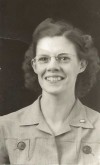
1914-1994
Biography
- Lila Packard was born on 24 November 1914 in Canton, Pennsylvania.1
- Lila married Stuart LaRue Dunbar, son of Carlton Hooker Dunbar and Adda Emma Sargeant, estimated 1932.1,2
- Lila Packard died on 30 March 1994 in Denton, Texas, at age 79.1
Family: Stuart LaRue Dunbar (b. 6 December 1909, d. 18 August 1992)
- Erma Jean Dunbar+ (b. 15 April 1933, d. 7 May 2006)
- Curtis Floyd Dunbar (b. 7 November 1935, d. 17 October 1951)
- John Vincent Dunbar (b. 23 May 1954, d. 24 March 1999)
Other Information
- Last Edited: 19 September 2024 16:46:29
Citations
Erma Jean Dunbar 1
1
- Sargent Lineage: Stuart10, Adda Emma Sargeant9, Dudley8, George7, Samuel Sargent6, Mary Burditt5, Jabez4, Mary Sargent3, Joseph2, John1, William0
Parents
- Father: Stuart LaRue Dunbar (b. 6 December 1909, d. 18 August 1992)
- Mother: Lila Packard (b. 24 November 1914, d. 30 March 1994)
Biography
- Erma Jean Dunbar was born on 15 April 1933 in Pennsylvania.1
- Erma married Vincent James Chrzan on 25 February 1952 in Endicott, New York.1,2
- She died on 7 May 2006 in Norwich, New York, at age 73.1
- She was buried in Saint Pauls Cemetery, Norwich, New York.2
 Gravestone
Gravestone
Family: Vincent James Chrzan (b. 14 October 1927, d. 7 November 2006)
- Victoria Jean Chrzan+ (b. 15 September 1955, d. 17 August 2020)
Other Information
- Relationship: 7th cousin of Linda Sargent
- Charts/Lists: Descendants of William Sargent, Immigrant (#1), Descendants of William Sargent, Immigrant (#2), Descendants of William Sargent, Immigrant (#3), Descendants of William Sargent, Immigrant (#4), Lydia Chipman: Mayflower Descendants
- Last Edited: 19 September 2024 16:46:29
Citations
Vincent James Chrzan1
Biography
- Vincent James Chrzan was born on 14 October 1927 in Pennsylvania.2
- Father: Frank Chrzan (b 1895) - Mother: Margaret Hayes (b 1900.)2
- Vincent married Erma Jean Dunbar, daughter of Stuart LaRue Dunbar and Lila Packard, on 25 February 1952 in Endicott, New York.1,3
- Vincent James Chrzan died on 7 November 2006 in Norwich, New York, at age 79.1
- He was buried in Saint Pauls Cemetery, Norwich, New York.2
Family: Erma Jean Dunbar (b. 15 April 1933, d. 7 May 2006)
- Victoria Jean Chrzan+ (b. 15 September 1955, d. 17 August 2020)
Other Information
- Last Edited: 19 September 2024 16:46:29